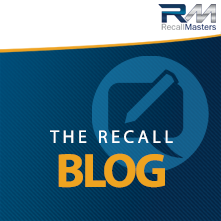Is In-Vehicle Technology Outpacing Itself?
Is In-Vehicle Technology Outpacing Itself?
A Blog Post by Sean Reyes, Chief Marketing Officer for Recall Masters
Many vehicle manufacturers and vendors are developing autonomous technology and incorporating it into the latest vehicles. The key factor here is that this technology has to be tested. And not only tested but tested in real-world driving conditions including the many variables it could encounter. Other passenger vehicles, pedestrians, bicyclists, motorcyclists, and any number of obstacles that a normal driver could encounter.
Autonomous vehicle manufacturers need permission from each state to do these tests in real-world environments and they need to clock miles in the millions to show that the vehicles are safe. They do have operators present in the vehicle in case something goes awry. Think of it like the old driver’s education cars with a steering wheel, gas, and brake pedal on the passenger side in case the instructor had to take over control.
In some cases, however, just like staring at white lines forever on a road trip, things can get a little dicey. Maybe attention lapsed for a moment. Maybe it’s the bumps on the sides of the roads designed to get your attention should you drift. Maybe the vehicle has a lane-deviation warning feature. No human (or apparently, vehicle) can respond in less than .2 seconds.
An article in Wired magazine proves this point. To summarize, “The Uber driving system—which had been in full control of the car for 19 minutes at that point—registered a vehicle ahead that was 5.6 seconds away, but it delivered no alert to her. The computer then nixed its initial assessment; it didn’t know what the object was. Then it switched the classification back to a vehicle, then waffled between vehicle and ‘other.’ At 2.6 seconds from the object, the system identified it as a ‘bicycle.’ At 1.5 seconds, it switched back to considering it ‘other.’ Then back to ‘bicycle’ again. The system generated a plan to try to steer around whatever it was but decided it couldn’t. Then, at 0.2 seconds to impact, the car let out a sound to alert Vasquez that the vehicle was going to slow down. At two hundredths of a second before impact, traveling at 39 mph, Vasquez grabbed the steering wheel, which wrested the car out of autonomy and into manual mode. It was too late. The smashed bike scraped a 25-foot wake on the pavement. A person lay crumpled in the road.”
Do you know how long the time difference is between 2/10th of a second and 2/100ths? It took you longer to read this sentence. The car hit the bicyclist and they died. It is important to point out that this is not an “anti-Uber” blog. This is simply an example of the point I am making about this technology.
Now we get down to the nitty-gritty. Who is at fault? The autonomous vehicle? Or the operator? The operator had been trained to pretty much “let the car do its own thing” while the car had been programmed to recognize and act. This is exactly the type of incidents that automakers have been telling people that autonomous cars will prevent. Yet, in this case (and in many others), it didn’t. While it was this person’s profession to monitor and let the vehicle do its thing, many consumers are buying vehicles with this technology simply based on the ooh-aah factor.
Ultimately, it Is tough to sue a car. Someone got killed by an autonomous car. It had an operator charged with monitoring what it did. Do you blame the car for its 2/10th of a second notification — or the driver? These are questions that will continue to come up and I guarantee that one of these days, a court is going to decide. And that could change the history – or at least extend its adoption – of new technology well into our future, despite how enticing it seems to be.
About the Author


